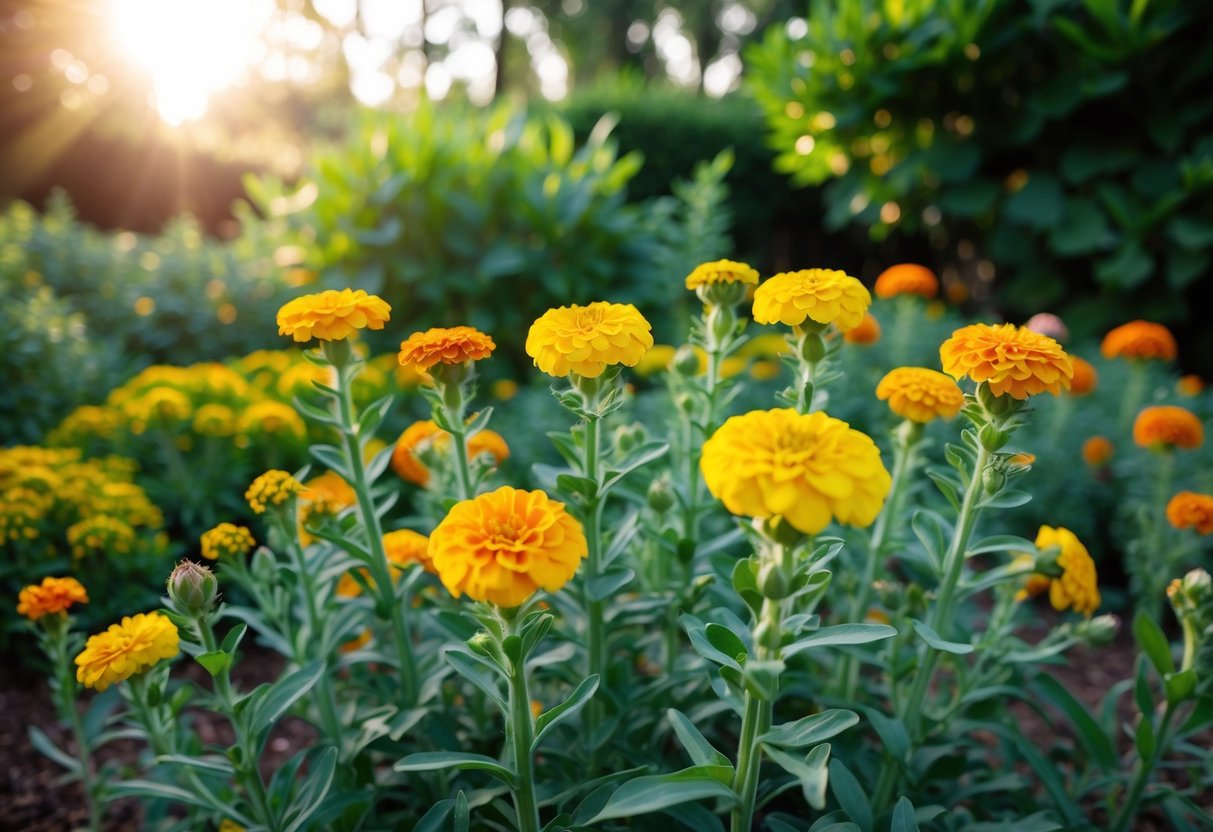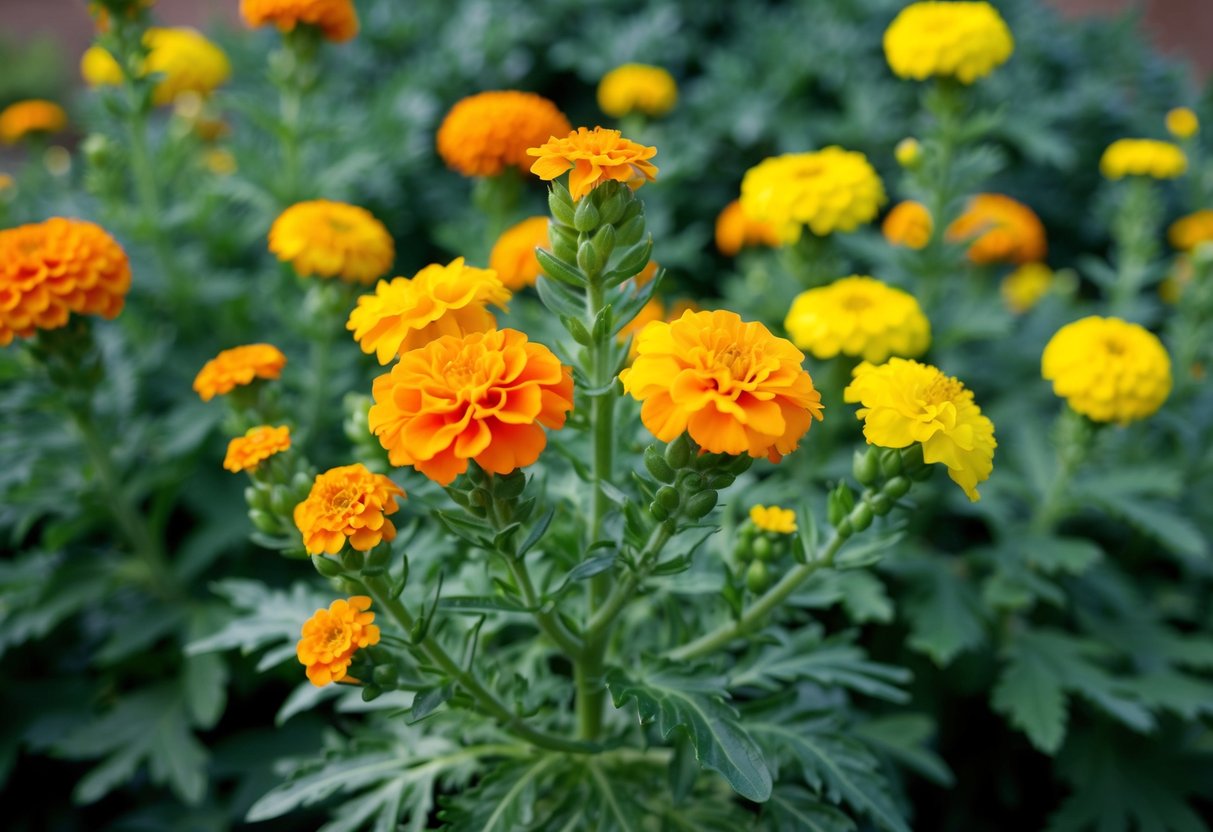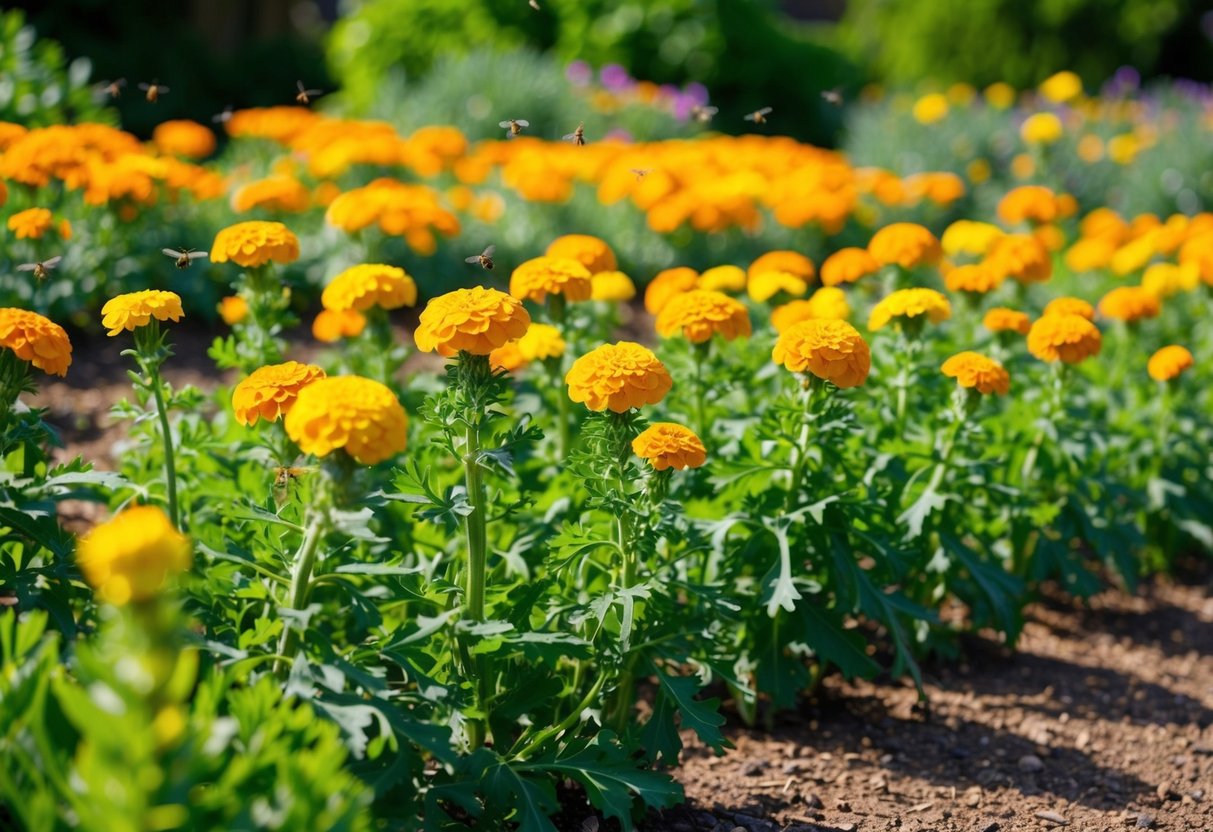Do Marigolds Bloom All Year? Seasonal Insights for Gardeners
Are you curious if marigolds can brighten your garden all year long? You’re not alone. Many gardening enthusiasts wonder about this vibrant flower’s blooming cycle. Marigolds, generally grown as annuals, don’t bloom all year unless conditions are constantly warm and sunny.

Different types of marigolds, like Tagetes and Calendula, have varying lifespans. Some varieties are tough perennials in certain climates and can surprise you by blooming again. Understanding these differences can help you plan your garden and keep it colorful.
You might find marigolds appealing because they’re easy to grow and don’t require much to thrive. They add a burst of color, whether you have them flourishing as annuals or perennials in your space.
Want to know how to extend their bloom time? Keep reading to make the most of these delightful flowers.
Understanding Marigolds

Marigolds are a popular choice in gardens for their bright colors and ease of care. They come in several varieties with different characteristics, and each offers its unique charm. Knowing about these can help you make the best choice for your garden.
Marigold Varieties
There are several varieties of marigolds, each with distinct features. French marigolds (Tagetes patula) are well-loved for their smaller size and wide range of colors. They are perfect for borders and edging due to their compact growth. African marigolds (Tagetes erecta), known for their large pom-pom flowers, can grow quite tall, bringing bold color to your garden.
Signet marigolds (Tagetes tenuifolia) offer a different experience with their delicate, daisy-like flowers and citrus scent. This variety is great for culinary use as well. Finally, Calendula officinalis, often referred to as pot marigolds, differs from the Tagetes family but is loved for its medicinal properties. Understanding these varieties helps you pick the right marigold for your needs.
Botanical Background
Marigolds belong to the Asteraceae family, which also includes sunflowers and daisies. This family is known for flowering plants that are both hardy and easy to grow. The scientific names for marigolds like Tagetes erecta and Tagetes patula tell you about their species and hints at their growth habits.
These plants thrive in sunny locations and well-drained soil. While they aren’t true perennials, some can self-seed, allowing them to reappear each year in warmer climates. Marigolds are typically grown as annuals, making them a seasonal favorite for summer gardens. They are especially popular for their low-maintenance care and ability to deter pests naturally.
Cultivating Marigolds

When growing marigolds, it’s important to consider factors like soil, sun, and water. Different varieties require different planting distances and maintenance. Paying attention to these elements ensures vibrant blooms.
Germination and Planting
Marigold seeds are easy to start, making them a great choice for beginners. Begin by planting seeds about 1/4 inch deep in well-draining soil. The soil’s pH should be neutral, around 6.0 to 7.0, for optimal growth.
After the seedlings appear, thin them out to prevent overcrowding. For French and signet marigolds, space them 8 to 10 inches apart, while African marigolds need more room, around 10 to 12 inches. You can plant transplants in late spring after the risk of frost has passed.
Watering and Maintenance
Marigolds require regular watering but do not overdo it. Water them thoroughly once they dry slightly, as soggy soil can harm the plant. Focus on the root zone rather than watering from above to avoid leaf disease.
For healthy growth, deadhead spent flowers to encourage new blooms. Though marigolds aren’t heavy feeders, a bit of fertilizer now and then can boost their health.
Soil and Sunlight Requirements
Plant marigolds in well-draining, loamy soil for the best results. Avoid overly rich soils, as they can lead to lush foliage but fewer blooms. They thrive under full sun conditions, needing 6–8 hours of sunlight daily.
Proper sunlight ensures vibrant flowers. Planting in shaded areas can lead to leggy plants with fewer flowers. Regularly check that entire planting beds are free of shadows to maximize light exposure.
Caring for Marigolds

Marigolds are hardy flowers that require minimal care, but a few tasks can help them thrive even more. Key tasks include regular deadheading and pruning to ensure vibrant blooms, as well as managing diseases and pests to keep them healthy.
Deadheading and Pruning
Deadheading is essential for marigolds. By removing spent blooms, you encourage the plant to produce more flowers. This not only keeps your garden looking neat but also extends the flowering period.
Pruning is another important step. Trim any damaged or leggy stems to maintain a compact shape. This can also improve air circulation, helping prevent issues like powdery mildew.
Regularly check your marigolds and snip off any dying or yellowing leaves. This keeps them looking fresh and tidy.
Disease and Pest Management
Marigolds are generally resistant to many common plant problems, but diseases like powdery mildew can still affect them. Ensure your marigolds have plenty of space to improve airflow and consider watering at the base to avoid wetting the leaves.
Root rot is another potential issue. Make sure your garden has good drainage to prevent water from pooling around the roots.
As for pests, marigolds can attract nematodes, which are tiny worms that harm the plant roots. You might also spot other garden pests like aphids. A simple way to handle these is by spraying a mixture of water and a few drops of dish soap on the affected areas.
Marigolds Through the Seasons

Marigolds are vibrant annual flowers that greet you with their colors from spring to fall. Their blooming cycle greatly depends on climate and care. You’ll find tips on caring for them across different conditions and understand how to make the most of their blooming season.
Annual Blooms and Lifespan
Marigolds are known for their bright blooms that last several months. Typically, they start flowering in the late spring and continue until the first frost of the year. This means they can blossom for about 5 to 6 months, making them a favorite for many gardeners. Because they are annual flowers, marigolds complete their life cycle in one growing season, so you’ll need to replant them each year.
These flowers are perfect if you want something that lasts through the seasons and requires minimal maintenance. Keep them in good garden soil, and ensure they have enough water, especially during dry spells. Their blooms can add a pop of color almost anywhere you plant them.
Adapting to Climate
Marigolds thrive in various climates, from cooler areas to hot climates. They’re quite drought-tolerant, making them a great choice if you live in areas with warm or dry conditions. In milder climates, they might even bloom a bit longer.
Depending on the specific type of marigold, you might see them flourish in different hardiness zones. For the best blooms, plant them in sunny locations where they can soak up lots of light. If you adjust their care based on your regional climate, these flowers will reward you with vibrant colors throughout their growing season.
Companion Planting with Marigolds

Marigolds are more than just pretty flowers. They can help improve your garden by keeping certain pests away and supporting other plants. When choosing companion plants, it’s important to consider how they work together with marigolds.
Benefits in the Garden
Marigolds offer significant benefits when used in companion planting. They are known for their ability to keep pests like beetles and caterpillars away from your garden plants, making them a natural pest deterrent. By planting marigolds around crops such as broccoli, you can reduce pest problems and improve your harvest.
The chemicals in marigold roots can also deter root-boring worms, making your garden healthier. Additionally, marigolds attract pollinators, like bees, which can increase the pollination of other plants nearby. Their low water and soil requirements mean they don’t compete for resources, which makes them friendly companions for many garden plants. Their vibrant colors can brighten up your garden while still being practical.
Popular Companion Plants
Many different plants work well with marigolds. Vegetables like tomatoes, beans, and onions make great companions. Marigolds’ pest-repelling abilities help protect these crops and promote healthier growth.
Herbs such as thyme also benefit from marigold companionship. Thyme helps suppress weeds, while the combination with marigolds can help keep pests at bay and improve plant health.
For flowering plants, marigolds fit perfectly with Brussels sprouts by attracting helpful pollinators. With such a wide range of compatible companion plants, marigolds are versatile additions to any garden.







